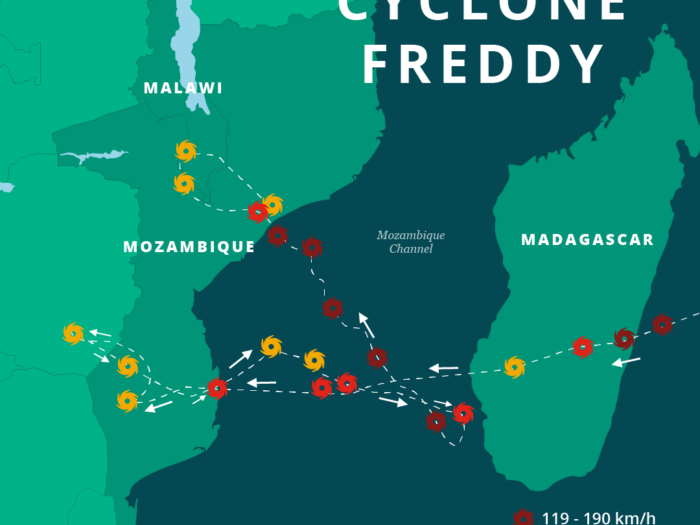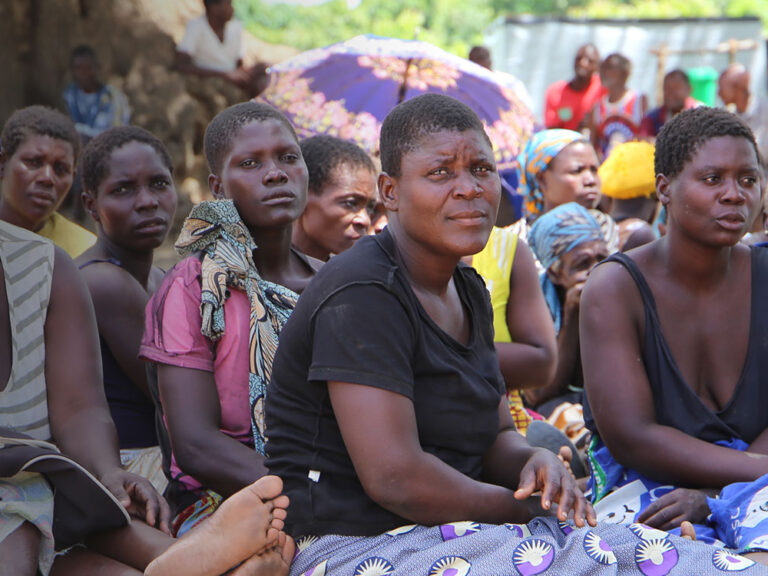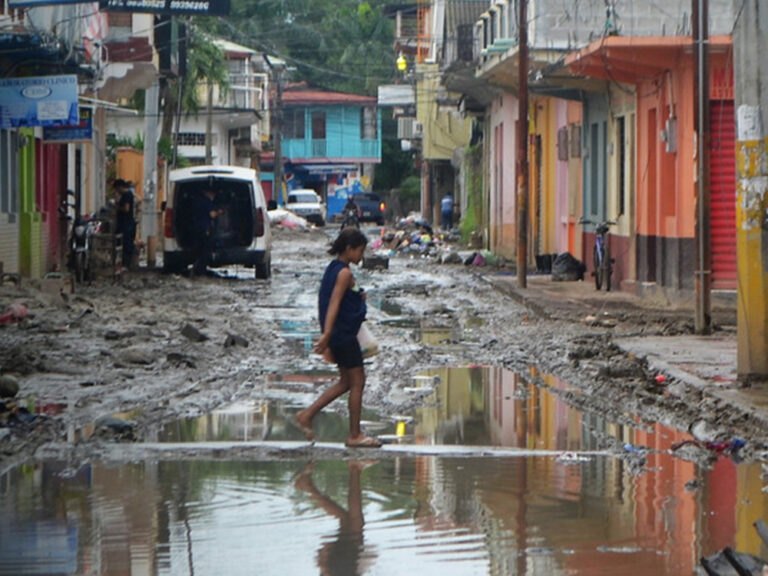

What happened in Malawi?
On 11 March 2023, Tropical Cyclone Freddy made landfall in Madagascar, before moving over Mozambique and Malawi.
It was exceptionally powerful and long lived, leaving widespread destruction in its path. Malawi was the hardest hit. Incessant rain caused catastrophic floods, devastating land and homes and killing many people.
Experts believe the cyclone may be the longest lasting and most powerful tropical cyclone ever recorded worldwide.


How did ShelterBox respond?
ShelterBox sent an assessment team to Malawi after Tropical Cyclone Freddy.
Our team spoke to potential partners and worked to understand how we could support families with emergency shelter.
We have worked in Malawi several times before, including in 2019 following Cyclone Idai. The impact of Freddy was said to be five times worse than Idai.
Cyclone Freddy: Quick Facts
Experts believe Cyclone Freddy may be the longest lasting and most powerful tropical cyclone ever recorded worldwide.
Accumulated energy – Freddy recorded the highest ever accumulated energy for a single cyclone. Even though it was just one storm, it recorded more energy over its lifetime than you would expect to see in an entire North Atlantic hurricane season.
Record length – Freddy developed on February 6 2023 and lasted for 34 days. The previous record was held by Typhoon John, which lasted for 31 days in 1994.
The President of Malawi has described Tropical Cyclone Freddy as more devastating than any other disaster Malawi has ever experienced.
Over half a million (650,000) people were displaced and are now living in camps and buildings like schools.
Nearly 4,000 people were rescued after the onset of the floods. Some people remained stranded in hard-to-reach areas.
The rain continued to fall in many affected areas after the cyclone, making any search and rescue more difficult.
Tropical storms like hurricanes and cyclones are a natural part of our climate.
Whilst climate change is not increasing the number of tropical storms we see, the rising temperatures are causing the storms to become much more intense and have a far more devastating impact. In recent years, we have seen far more of the highest possible categories of storms – Categories 4 and 5.
Research also suggests that the climate crisis is influencing the speed of tropical storms, causing them to move more slowly, leading to greater destruction.


